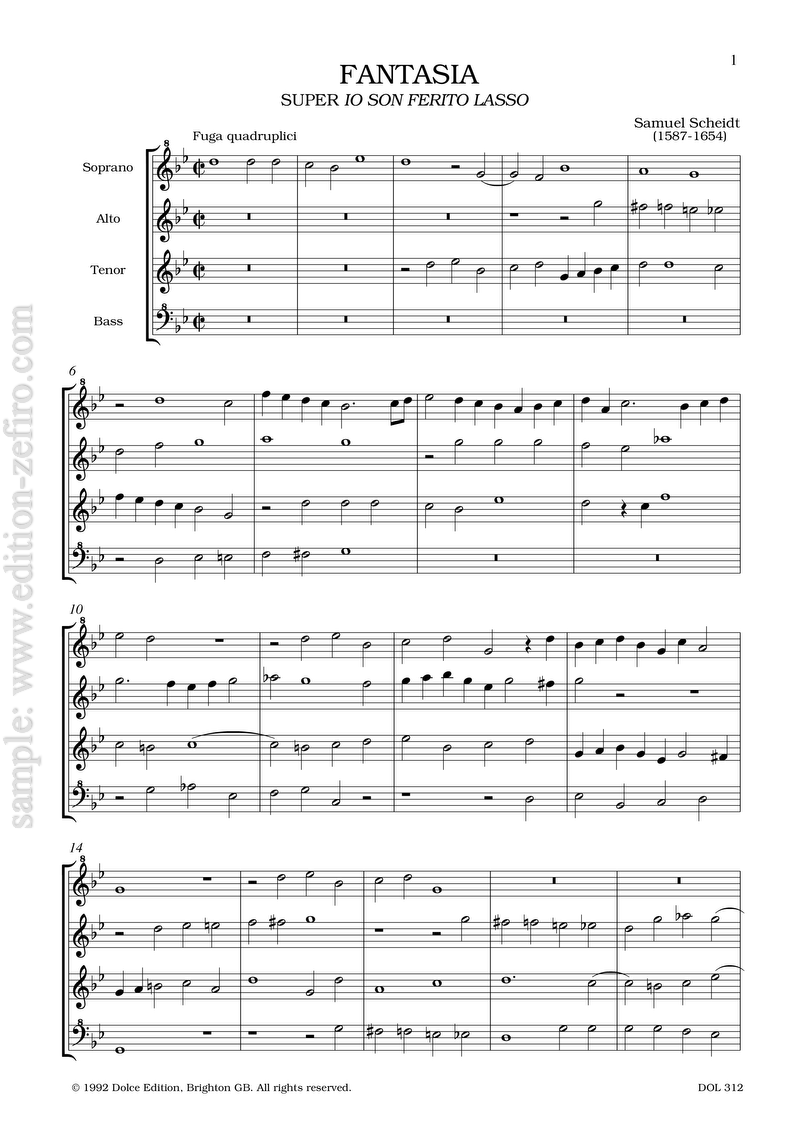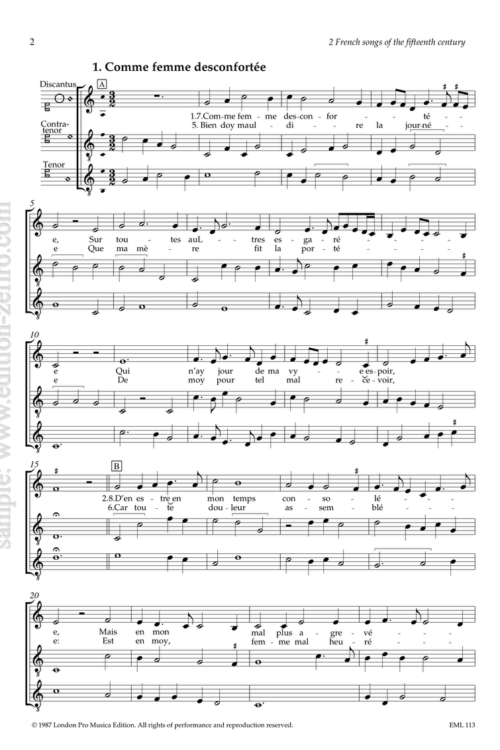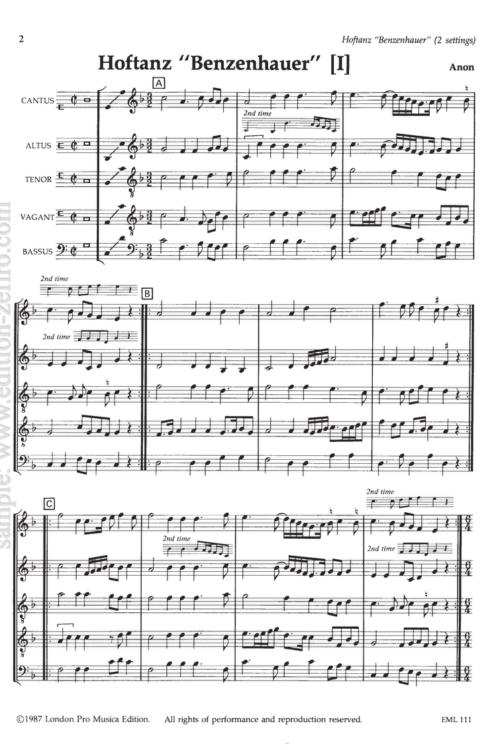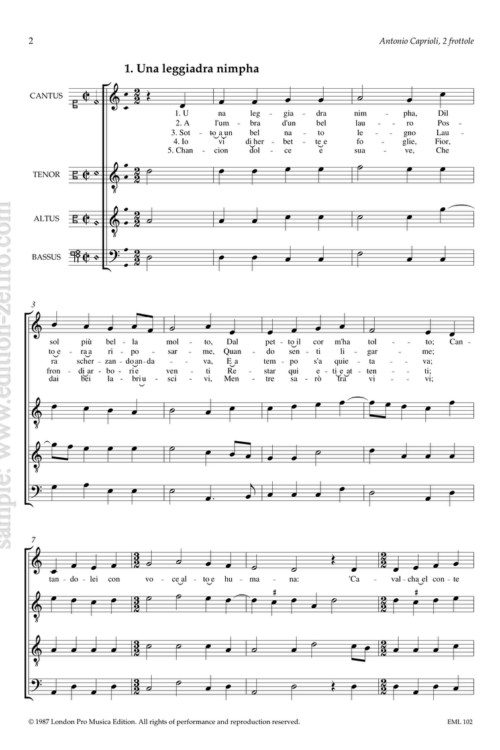This magnificent tour de force appeals to those who find many early music pieces too fragmentary.
This magnificent fantasia comes from Scheidt’s Tablatura Nova, a varied collection of keyboard music set in score, published in Hamburg in 1624. Palestrina’s madrigal, Io son ferito lasso, on which it is nominally based, was popular with Italian musicians of around 1600 as a starting point for improvisation: there are elaborately decorated versions by Bassano, Bovicelli, Francesco Rognoni and Orazio Bassani. In fact only the first of Scheidt’s four themes comes directly from Palestrina, though the second is achieved by reversing the first. The third and fourth themes are chromatic, with one ascending, the other descending; such themes are found in several substantial works by Scheidt’s tacher, Jan Pieterszoon Sweelinck. During the course of the work Scheidt introduces new contrasting themes, for example bar 26 alto, bar 48 tenor, bar 56 bass, bar 64 soprano; often these slightly busier figures are set against one of the main themes in augmentation (double note values). Towards the end Scheidt increases the pace by presenting the chromatic motive in diminution, first in halved note values (bar 106), then in quartered (149). The work ends with a richly-worked section in which all four themes appear together.
(Bernard Thomas)






